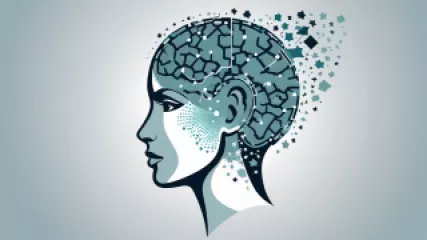Cognitive Biases: A Step-by-Step Guide to Understand and Overcome Them in Persuasion
Cognitive Biases: A Step-by-Step Guide to Understand and Overcome Them in Persuasion
In the world of persuasion, understanding and overcoming cognitive biases is a crucial skill. Cognitive biases are the mental shortcuts our brains take, often leading to irrational or illogical decision-making. As a persuasion expert, Sierra Thompson is here to guide you through a step-by-step process to identify, understand, and ultimately overcome these biases in your pursuit of effective persuasion.
The Power of Cognitive Biases in Persuasion
Cognitive biases are powerful influencers of human behavior, and they play a significant role in the art of persuasion. These mental shortcuts, or heuristics, are the brain's way of processing information quickly and efficiently, but they can also lead to systematic errors in judgment and decision-making. Understanding how cognitive biases work and how they can be leveraged (or mitigated) is a crucial skill for anyone seeking to become a more effective persuader.
In the realm of persuasion, cognitive biases can be both a blessing and a curse. On one hand, they can be used to your advantage, allowing you to tap into the inherent decision-making patterns of your audience. On the other hand, if you're not aware of these biases, they can also work against you, leading your audience to make choices that may not align with your desired outcome.
Identifying the Most Relevant Cognitive Biases
The first step in overcoming cognitive biases in persuasion is to identify the most relevant ones. While there are numerous cognitive biases, some are more prevalent and impactful in the context of persuasion. Here are a few of the key cognitive biases you should be aware of:
Anchoring Bias
The anchoring bias refers to the human tendency to rely too heavily on the first piece of information offered (the "anchor") when making decisions. This bias can be used to your advantage in persuasion by strategically presenting an initial piece of information that serves as a reference point for your audience's subsequent decisions.
Confirmation Bias
Confirmation bias is the tendency to search for, interpret, and favor information that confirms our existing beliefs or hypotheses. This bias can make it challenging to persuade someone to change their mind, as they may unconsciously dismiss or discount information that contradicts their preconceived notions.
Framing Effect
The framing effect refers to the way in which the presentation of information can influence decision-making. By framing your message in a particular way, you can guide your audience's perceptions and, consequently, their choices.
Loss Aversion
Loss aversion is the tendency for people to strongly prefer avoiding losses over acquiring gains. This bias can be leveraged in persuasion by highlighting the potential losses associated with not accepting your proposal or recommendation.
Social Proof
The social proof bias is the tendency for people to be influenced by the actions and behaviors of others, particularly those they perceive as similar to themselves or part of their in-group. Leveraging social proof can be a powerful tool in persuasion, as it taps into our innate desire to conform and fit in with our peers.
Understanding the Psychological Mechanisms Behind Cognitive Biases
To effectively overcome cognitive biases in persuasion, it's essential to understand the underlying psychological mechanisms that drive them. Let's delve deeper into the science behind some of the key biases we discussed:
The Role of Heuristics
Cognitive biases often arise from the use of mental heuristics, or rules of thumb, that our brains employ to quickly process information and make decisions. These heuristics, while generally useful, can lead to systematic errors in judgment when applied inappropriately or in certain contexts.
For example, the anchoring bias is thought to be driven by the availability heuristic, which leads us to rely heavily on the first piece of information we encounter, even if it's irrelevant or arbitrary. Similarly, the confirmation bias is believed to be influenced by the selective perception heuristic, which causes us to focus on information that aligns with our existing beliefs while overlooking or dismissing contradictory evidence.
The Influence of Emotions and Intuition
Cognitive biases are not solely the result of rational, logical processing; they are also heavily influenced by our emotions and intuitive decision-making processes. The framing effect, for instance, is closely tied to the way our emotions and feelings shape our perceptions and choices.
When information is presented in a way that evokes a strong emotional response, such as fear or excitement, it can override our rational decision-making and lead us to make choices that may not align with our best interests. Understanding the emotional underpinnings of cognitive biases is crucial for developing effective strategies to overcome them in persuasion.
The Impact of Social Influences
Many cognitive biases, such as social proof and conformity bias, are rooted in our innate desire to belong to social groups and align our behaviors with those of our peers. Our need for social approval and acceptance can often override our individual rational judgments, leading us to make decisions based on the perceived norms and behaviors of our social circles.
Recognizing the powerful influence of social factors on our decision-making processes is essential for understanding and addressing cognitive biases in the context of persuasion. By understanding how social influences shape our perceptions and choices, you can develop strategies to leverage or mitigate these biases effectively.
Strategies for Overcoming Cognitive Biases in Persuasion
Now that we've explored the nature and underlying mechanisms of cognitive biases, let's dive into some practical strategies for overcoming them in the pursuit of effective persuasion:
Debiasing Techniques
One of the most effective ways to overcome cognitive biases is to employ debiasing techniques. These strategies are designed to counteract the mental shortcuts and heuristics that often lead to biased decision-making. Some key debiasing techniques include:
- Considering the Opposite: Actively seeking out and considering information that contradicts your initial beliefs or hypotheses can help reduce confirmation bias.
- Delaying Decisions: Taking a step back and allowing more time to deliberate can help overcome the influence of anchoring and other heuristics that lead to hasty judgments.
- Framing Alternatives: Presenting your message or proposal in multiple ways, with different frames or perspectives, can help mitigate the impact of the framing effect.
- Leveraging Social Norms: Highlighting the behaviors and choices of trusted peers or authority figures can tap into the power of social proof to influence decision-making.
Fostering Critical Thinking
Encouraging critical thinking and a willingness to question assumptions is another effective strategy for overcoming cognitive biases in persuasion. By cultivating a mindset of intellectual humility and openness to new information, you can help your audience become more aware of their own biases and more receptive to your persuasive messages.
This can be achieved through techniques such as:
- Asking Probing Questions: Encouraging your audience to examine their beliefs and thought processes more closely can help uncover underlying biases.
- Providing Balanced Information: Presenting a comprehensive, unbiased overview of the relevant information can help counteract confirmation bias and other cognitive pitfalls.
- Promoting Diverse Perspectives: Incorporating diverse viewpoints and alternative frames of reference can challenge the status quo and foster a more nuanced understanding of the issue at hand.
Crafting Persuasive Messages
In addition to debiasing techniques and critical thinking strategies, the way you craft your persuasive messages can also play a significant role in overcoming cognitive biases. By understanding the psychological drivers behind these biases, you can tailor your communication to mitigate their influence and increase the effectiveness of your persuasive efforts. Some key considerations include:
- Framing and Messaging: Carefully crafting the framing and messaging of your persuasive appeals to leverage the power of the framing effect and other cognitive biases.
- Anchoring and Reference Points: Strategically presenting initial information or reference points that shape your audience's subsequent decisions and perceptions.
- Emotional Appeals: Leveraging emotional appeals that tap into your audience's intuitive decision-making processes, while still maintaining a rational, balanced approach.
- Social Proof and Influence: Incorporating relevant social proof, testimonials, and other social cues to harness the power of conformity and social influence.
Practical Applications and Case Studies
To bring these concepts to life, let's explore some practical applications and real-world case studies of overcoming cognitive biases in persuasion:
Case Study: Overcoming Confirmation Bias in Marketing
In the marketing industry, confirmation bias can be a significant obstacle to effective persuasion. Consider the case of a financial services company that wanted to promote a new investment product. The marketing team, convinced of the product's merits, primarily focused on highlighting the potential gains and positive outcomes, while downplaying any potential risks or drawbacks.
To overcome this confirmation bias, the company adopted a more balanced approach. They actively sought out and presented information that challenged their initial assumptions, including potential risks and limitations of the product. By fostering a more critical and open-minded perspective, they were able to craft a persuasive message that resonated better with their target audience, leading to increased engagement and conversion rates.
Case Study: Leveraging Social Proof to Overcome Loss Aversion
In the realm of sales and customer acquisition, loss aversion can be a formidable barrier to persuasion. Consider the case of a software company that struggled to convince potential customers to switch from their current solutions to the company's newer, more advanced product.
To overcome this challenge, the company deployed a multifaceted strategy that leveraged the power of social proof. They highlighted successful case studies and testimonials from satisfied customers, emphasizing the benefits they had experienced by making the switch. They also incorporated social cues, such as displaying the number of current users and industry endorsements, to tap into the social proof bias and reassure potential customers that they were making a safe and desirable choice.
By addressing the loss aversion bias through the strategic use of social proof, the company was able to significantly increase its conversion rates and win over a larger share of the target market.
Conclusion: Mastering Cognitive Biases for Effective Persuasion
In the art of persuasion, understanding and overcoming cognitive biases is a critical skill. By recognizing the psychological mechanisms that drive these biases, and employing strategic debiasing techniques, critical thinking, and persuasive messaging, you can enhance your ability to effectively influence and persuade your audience.
Remember, cognitive biases are not just obstacles to be overcome; they can also be powerful tools in the hands of a skilled persuader. By leveraging these biases in a ethical and transparent manner, you can create persuasive messages that resonate deeply with your audience and drive the outcomes you desire.
As you continue to hone your persuasion skills, keep these principles of cognitive bias management in mind. With practice and a commitment to self-awareness, you can become a master of persuasion, guiding your audience towards informed, rational decisions that align with your objectives.






